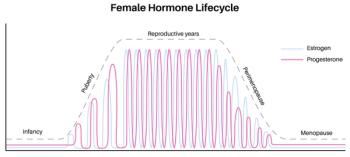
Trouble Looms for Tiny Infants Abused in Childhood
NEW YORK -- Low birth weight and child abuse combine synergistically to increase the later risks of depression by 10-fold and social dysfunction by nearly ninefold, researchers here said.
NEW YORK, Feb. 5 -- Low birth weight and child abuse combine synergistically to increase the later risks of depression by 10-fold and social dysfunction by nearly ninefold.
So found Yoko Nomura, Ph.D., M.P.H., and Claude M. Chemtob, Ph.D., both of Mount Sinai School of Medicine here, in an observational study published in the Feb. 5 issue of The Archives of Pediatric & Adolescent Medicine.
The findings offers both hope and a warning for children who weigh less than 2,500 g at birth, they said.
"The present data suggest that children born with low birth weight did as well as their counterparts as long as they did not face serious adversity, such as child abuse," the researchers said.
"However, when faced with both adversities, these children had substantially poorer outcomes than children facing either adversity alone," they continued.
"Perhaps monitoring mothers' well-being, offering preventive mental health services to mothers with low-birth-weight children, and monitoring low-birth-weight children to provide early intervention together could protect such children from subsequent child abuse," they added.
The researchers analyzed data from the Johns Hopkins Collaborative Perinatal Study, which included all pregnant women who received prenatal care and delivered at Johns Hopkins Hospital from 1960 to 1964. The infants were followed periodically during childhood through age 34.
In a face-to-face interview in adulthood, 13% of the participants reported high-level exposure to violence in the family, which could include physical and verbal abuse. A similar proportion had low birth weight (14%). An additional 3% had both.
Other demographic variables were similar between groups. Most of the participants were African American (81.5%) or white (18.3%) and slightly more than half were women.
The social adaptation findings during adolescence were almost uniformly worst among those with both low birth weight and abuse followed by those with abuse only. The researchers reported:
- Suspension in junior high school was significantly more common among teens with either both factors compared with abuse only or with low birth weight only or neither (63.6%, 46.0%, 33.3%, and 32.7%, respectively, P<0.001),
- Academic excellence (indicated by being on the honor roll) was least common among those with both risk factors (27.3% versus 43.4% abuse only, 48.0% low birth weight only, and 52.0% neither, P<0.05 both versus neither),
- The number of repeated grades was again highest in the dual risk factor group (45.5% versus 43.8% abuse only, 31.3% low birth weight only, and 30.0% neither),
- Teens with both factors or abuse only had significantly higher rates of running away from home; dropping out of high school; trading sex for food, money or drugs; and lifetime history of school suspension compared with those with low birth weight only or neither (P<0.01 or P<0.001 for all).
In adulthood, the risk of psychiatric illness was highest among the group that had both low birth weight and childhood abuse. Compared to the group with neither risk factor, the findings were:
- For depression, about a 10-fold increased risk in the group with both factors (P<0.001), about threefold increased risk in the abuse only group (P<0.007), and no significant elevation in risk for the low birth weight only group,
- For social dysfunction, more than sevenfold increased risk for the group with both factors (P<0.001), a two- to threefold elevated risk for the abuse only group, and no significant difference for the low birth weight only group, and
- For somatization, a fourfold increased risk among the dual risk factor group (P<0.001), a two- to threefold increased risk for the abuse only group, and no significant increase in risk for the low birth weight only group.
When the researchers looked for evidence of synergism between abuse and low birth weight, there was "clear evidence" for psychiatric illness but not for medical illness. The proportion attributable to additive interaction was:
- 0.86 for depression (95% confidence interval 0.05 to 1.67),
- 0.81 for social dysfunction (95% CI -0.001 to 1.59),
- 0.77 for somatization (95% CI 0.07 to 1.48),
- 0.08 for asthma (95% CI -0.12 to 0.77), and
- 0.13 for hypertension (95% CI -0.04 to 0.46).
The results were controlled for mother's income level at the birth of the child; gestational age; poverty level of the family at age seven; mother's education, marital status, age, and parity; and children's age, sex, and race.
The researchers hypothesized that "dysregulation of hypothalamic-pituitary-adrenal axis functioning may serve as an underlying biological mechanism that explains the pathway between these very different risk factors."
They said their study is part of a large number of research studies on long-term adverse effects of low birth weight, which started in the 1970s with improved neonatal intensive care and is now coming to fruition as survivors from that time are have reached adulthood.
"Although such studies have great public health significance, their findings are still inconclusive," Drs. Nomura and Chemtob cautioned.
Public health surveillance should continue for low birth weight infants, they suggested, along with targeted support for caregivers, such as interventions to ease stress in the family and to encourage effective parenting, they added.
Newsletter
Enhance your clinical practice with the Patient Care newsletter, offering the latest evidence-based guidelines, diagnostic insights, and treatment strategies for primary care physicians.



























































































































































































































































































